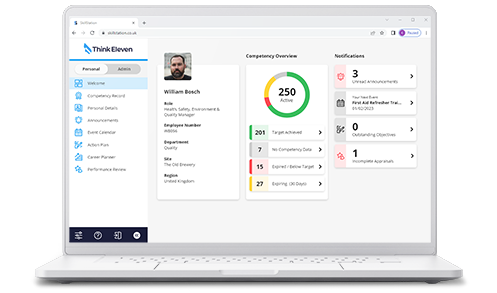Is your training and development activity transactional or transformational? If it’s transactional (box ticking) it is unlikely to be adding value to your organisation or those being developed.
The average UK expenditure per employee on training & development is £1,600 p.a. and this does not include travel, expenses, accommodation etc.
It’s therefore hugely important that any development undertaken is carefully considered to ensure there is an explicit link to an employees’ role, function and most importantly, the organisational objectives and strategy.
Tip 1 – Return on Investment (ROI) from your L&D Budget
Set clear and measurable objectives with the employee before they attend any training e.g. a project which will utilise and demonstrate the application of the knowledge and skills acquired during the training. If you’re smart about this, you can build in tangible measures to deliver demonstrable benefits e.g. a change and improvement in services, processes, systems, procedures and behaviours. This will ensure you leverage value and a return from your investment.
Tip 2 – Find your "why" (Values and Behaviours)
It is understandable and quite common for organisations to recruit and train for technical capability i.e. technical knowledge and skills required to fulfil a particular role such as an accountant, mechanical engineer, project manager, HR manager, software engineer etc. Technical ability is very important, but only a narrow dimension of a person’s capability.
Our recommended approach is to of course measure technical alignment and capability, but equally if not more importantly ensure that your employees are behaviourally and culturally aligned with your organisational values. Achieving behavioural and cultural alignment across your workforce will deliver transformational results. When your workforce has both the ‘Skill and the Will’ your time at the office will be more enjoyable and productive.
Simon Sinek’s TED Talk, How Great Leaders Inspire Action - Understanding and defining Why, How and What you do is vitally important to any organisation operating in today’s hugely competitive global economy.
Tip 3 – Training vs. Development: More Than Just Words
We feel the need to change our vocabulary and stop or inadvertently defaulting to the word Training and consider replacing it with Development.
There is a reason for our preference, it’s because training tends to imply a narrow process. Let us explain. Training is a process where we tend to deliver knowledge and skills through a process, quite often classroom based or a 3rd party training provider. If you were to close your eyes and think of the word training, what images does this invoke? Is it a classroom, or vendor training workshop?
What happens if you close your eyes and think about the word development, what kind of images does that conjure up? Is it coaching, mentoring, on-the-job training, job shadowing, secondments, academic courses, reading, discovery learning and so much more?
We believe a focus on development rather than training is a step towards helping deliver the full potential of your workforce, whilst minimising wasted expense on ineffective or unnecessary training.
Putting it another way…
“If you always do what you've always done, you'll always get what you've always got.”
Henry Ford.
Tip 4 – Leaders and Managers are your Key Enablers
The competence and capability of any organisations leaders and managers is pivotal to the success of the organisation. They should not be valued more than anyone else, nor should they put on pedestal. The reason leaders and managers are so important is that they are responsible for mobilising, motivating and optimising the capability and performance of their teams.
Engaging, unlocking and leveraging value from your people.
The values, vision, strategy and purpose of any organisation is shaped and led by organisational leaders and managers; however, it needs to embraced and owned by everyone.
It’s therefore critically important that the knowledge, skills and competencies of a Leader & Manager are clearly defined, assessed and reviewed as these roles are typically the highest paid too. They are the enablers or blockers to your organisational success.
Tip 5 – Records of Training vs. Evidence of Competence
Not semantics, there is a real difference between records of training i.e. what you’ve delivered (done to someone) vs. evidence of competence, e.g. Information that demonstrates an employee has the knowledge, skills and capability to carry out a specific task/activity competently to a defined standard.
If you ensure post training (development) that your employees are assessed in the right way, you can ensure and demonstrate that your time and investment has been spent wisely, resulting in improved capability. All too often we find that training is completed and there’s an assumption of competence without any formal assessment. In some sectors and roles this can present significant risks e.g. health & safety, quality, compliance, product and/or process etc.
Competent People = Amazing Results
There’s also a trend of external auditors seeking evidence to demonstrate competence and compliance as they regard records of training as only one aspect of this important process.
Do you have records of training, or a much more robust approach of Competency Management?
Training & Development Help & Advice; Here to Help.
If you organisation needs help or advice with any of the above, please contact us. We have a wealth of experience with organisations across all sectors.


